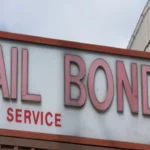Introduction
Every space must prioritize fire safety, but it is of the utmost importance when electrical fires are present. Knowing which fire extinguisher to use in certain situations can help avoid serious harm or even death. Specialized extinguishers are required to deal with electrical fires (also known as Class C fires) because of the particular dangers posed by energized electrical equipment. What fire extinguisher is used for electrical fires? This article explores the various kinds of fire extinguishers that are designed to put out electrical fires, how they work, and what you can do to make sure that your home is safe from electrical fires.
Understanding Electrical Fires
Appliances, circuit breakers, and wiring are the primary sources of electrical fires. There is a high risk of electrocution and the fire could spread rapidly through electrical circuits, making these fires extremely dangerous. Use only fire extinguishers made for this purpose; using the wrong kind can make the situation much worse.
Types of Fire Extinguishers for Electrical Fires
CO2 Fire Extinguishers
Mechanism of Action
A carbon dioxide (CO2) fire extinguisher will suffocate a fire by removing oxygen from the air around it. In addition to putting out the fire, the gas is released while it is still cold. It is safe to use CO2 extinguishers on electrical fires because they are not conductive.
Advantages
Server rooms and data centers are examples of places with sensitive electrical equipment, so it is crucial to have CO2 extinguishers that do not leave any residue. As a result, the machinery is less likely to sustain damage even after the fire has been put out.
Applications
Places with extensive electrical infrastructure are perfect for installing CO2 extinguishers. Offices, computer labs, and factories with a lot of electrical equipment tend to have them.
Limitations
Although CO2 extinguishers work, they aren’t without their limitations. Because the gas disperses so quickly, they are ineffective in open areas and shouldn’t be used to put out fires that involve flammable materials like cloth or paper.
Dry Chemical Fire Extinguishers
Types of Dry Chemicals
The most effective dry chemical extinguishers for electrical fires usually contain sodium bicarbonate or monoammonium phosphate, though they can use a variety of chemicals. These compounds are effective because they halt the fire triangle’s chemical reaction.
Non-Conductive Properties
It is safe to use dry chemical extinguishers on electrical fires because they are not conductive. In order to avoid electrical shock while fighting fires, this is essential.
Effectiveness
These fire extinguishers are not only useful for electrical fires, but also for Class A (ordinary combustibles) and Class B (flammable liquids) fires, thanks to their adaptability.
Residue and Cleanup
Dry chemical extinguishers have the major downside of leaving behind residue that can harm delicate electrical devices. Hence, they work best when quickly putting out the fire is more important than protecting the equipment.
Why Water-Based Extinguishers Are Not Suitable
Conductivity Risks
Due to water’s ability to conduct electricity, it is not safe to use water-based extinguishers on electrical fires. Electric shock and the spread of fire through conductive pathways are two potential outcomes of using water.
Potential Hazards
Injuries and property damage can be severe outcomes of attempting to extinguish an electrical fire using water. Additional fires or explosions can result from electrical systems being short-circuited by water.
Class C Rating Explained
What is a Class C Fire?
Electrical equipment and circuits that are energized are the subjects of Class C fires. These fires are unique in that they require specialized extinguishing agents due to the presence of electricity.
Criteria for Class C Extinguishers
To ensure the safe handling of electrical components in a fire, Class C fire extinguishers must not conduct electricity. Because of this marking, you can use the extinguisher without worrying about getting shocked.
Importance of Non-Conductive Agents
To keep the user safe and the fire put out, non-conductive agents are vital in fire extinguishers. They stop electrical currents from spreading through the stream.
Fire Extinguishers for Specific Environments
Server Rooms and Data Centers
CO2 Extinguishers
Because they don’t leave behind any residue, CO2 extinguishers are ideal for data centers and server rooms. Without harming delicate electronics, they successfully put out fires.
Placement and Maintenance
It is critical to inspect CO2 extinguishers regularly and to place them correctly. They need to be in good working order and checked often to make sure they are easily accessible.
Manufacturing Facilities
Dry Chemical Extinguishers
Dry chemical extinguishers are adaptable and can put out a wide variety of fires, making them ideal for industrial settings. They are prepared to deal with electrical fires and other typical fire dangers in these settings.
Strategic Deployment
In the event of an emergency, having dry chemical extinguishers placed in key areas of the building will allow for rapid response. Employee safety also depends on regular training on how to use them.
Residential Settings
Multi-Purpose Extinguishers
Households should have dry chemical extinguishers that can handle Class A, B, and C fires. They offer complete protection against fires caused by a wide range of hazards, including electrical fires.
Accessibility and Training
Homeowners have a responsibility to make sure that fire extinguishers are readily available and that everyone in the house is trained to use them. To ensure their continued functionality, it is essential to conduct regular maintenance checks.
How to Use Fire Extinguishers on Electrical Fires
P.A.S.S. Technique
Pull the Pin
To activate a fire extinguisher, pull the pin to release the tamper seal. Doing so gets the fire extinguisher ready to go.
Aim at the Base
Direct the nozzle towards the fire’s base, as that’s where the flames are most intense. The origin of the fire can then be more precisely targeted with this method.
Squeeze the Handle
The extinguishing agent can be released by gently pressing the handle. To keep the discharge under control, hold on firmly.
Sweep Side to Side
At the very bottom of the fire, move the nozzle in a side-to-side motion until the fire is totally out. To stop the fire from starting up again, make sure to cover it completely.
Safety Precautions
Avoid Direct Contact
Use an extinguisher away from any electrical components at all times. Avoiding electrical shock is made easier with this.
Maintain Safe Distance
To avoid harm while precisely directing the fire’s attack, stand a safe distance away.
Emergency Procedures
Evacuation Plans
Be sure to adhere to the predetermined evacuation procedures in case of an electrical fire. Ensuring safety must always take precedence.
Calling Emergency Services
In the event that the fire is out of control, you must contact emergency services without delay. Firefighters with the proper education and gear can safely put out blazes of any size or complexity.
Frequently Asked Questions
Can you use a foam fire extinguisher on electrical fires?
No, foam fire extinguishers are not suitable for electrical fires. Foam contains water, which conducts electricity, and can cause electrical shock or further spread the fire. For electrical fires, use non-conductive extinguishers like CO2 or dry chemical extinguishers.
What happens if you use a water extinguisher on an electrical fire?
Using a water extinguisher on an electrical fire is dangerous because water conducts electricity. This can result in electrical shock to the user and potentially spread the fire through conductive pathways. It’s crucial to use non-conductive extinguishers like CO2 or dry chemical for electrical fires.
What are the advantages of using CO2 extinguishers for electrical fires?
CO2 extinguishers are highly effective for electrical fires because they displace oxygen, suffocating the fire without leaving any residue. This is particularly beneficial in environments with sensitive electronic equipment, as it prevents damage and ensures the fire is extinguished safely.
Is there a specific fire extinguisher for computer room fires?
Yes, CO2 fire extinguishers are recommended for computer room fires. They do not leave any residue, which protects sensitive electronic equipment from damage while effectively extinguishing the fire.
How often should electrical fire extinguishers be inspected?
Electrical fire extinguishers should be inspected regularly, ideally monthly, to ensure they are in working condition. Professional maintenance and servicing should be conducted annually to comply with safety regulations and ensure the extinguishers will function correctly in an emergency.
Conclusion
If you care about fire safety in any setting, from homes to factories, you must know which fire extinguisher to use in the event of an electrical fire. What Fire Extinguisher is Used for Electrical Fires? The best options for rapidly putting out electrical fires are dry chemical extinguishers and carbon dioxide (CO2) extinguishers because they are not conductive. These extinguishers can greatly improve fire safety and avoid disastrous damage if properly trained personnel regularly maintain them and strategically place them. Preventing injuries and property damage in the event of an electrical fire requires immediate attention to the proper use of fire extinguishers.

Shannon Reyes is a seasoned writer with a knack for crafting engaging blogs on a variety of service industries, including plumbing, cleansing, moving, pest control, and roofing. With a keen eye for detail and a passion for helping readers navigate complex topics, Shannon brings her expertise to life through informative and accessible content.











